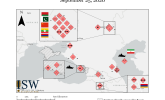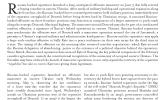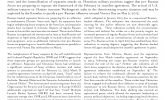The Case Against Negotiations with Russia
November 17, 2022 - ISW Press
Negotiations cannot end the Russian war against Ukraine; they can only pause it. The renewed Russian invasion in February 2022 after eight years of deadly “ceasefire” following the first Russian invasions of 2014 demonstrates that Russian President Vladimir Putin will not rest until he has conquered Kyiv. Ukraine’s resistance to the invasion this year shows that Ukrainians will not easily surrender. The conflict is unresolvable as long as Putinism rules the Kremlin. Negotiations won’t change that reality. They can only create the conditions from which Putin or a Putinist successor will contemplate renewing the attack on Ukraine’s independence. Before pressing Ukraine to ask Russia for talks we must examine the terms Ukraine might offer Russia, the dangers of offering those terms, and, more importantly, the likelihood that Putin would accept them.










